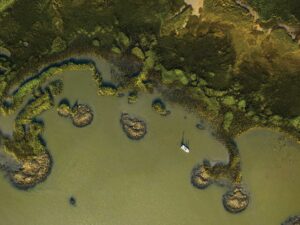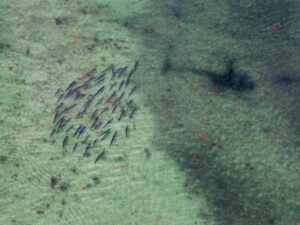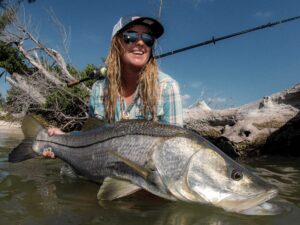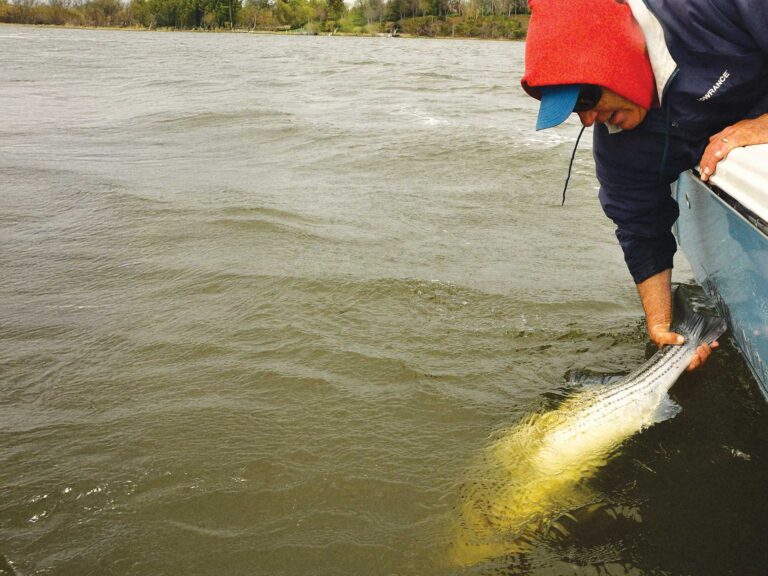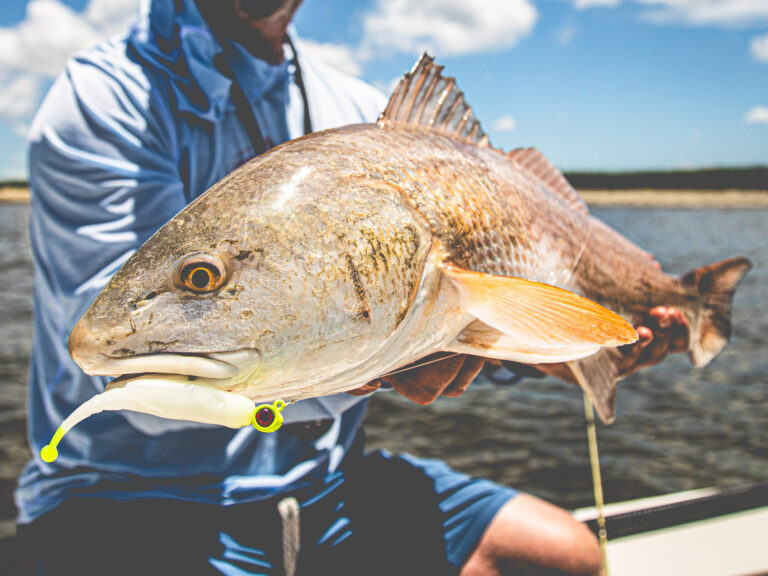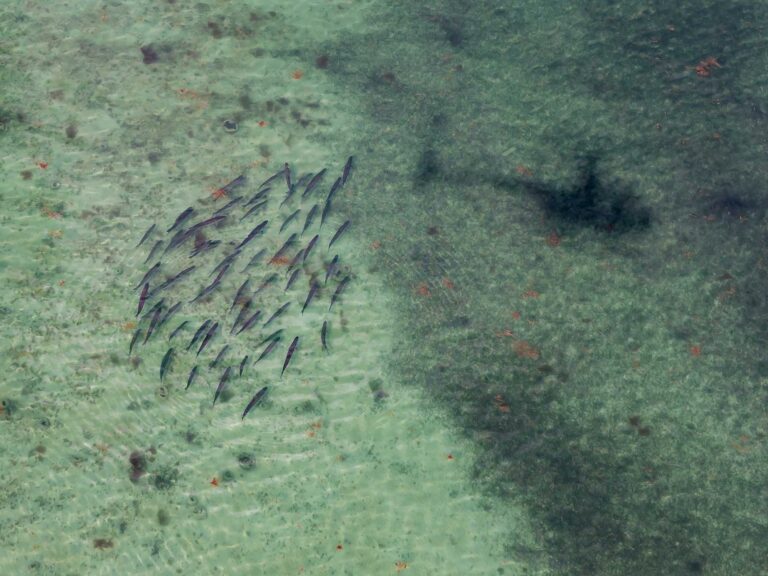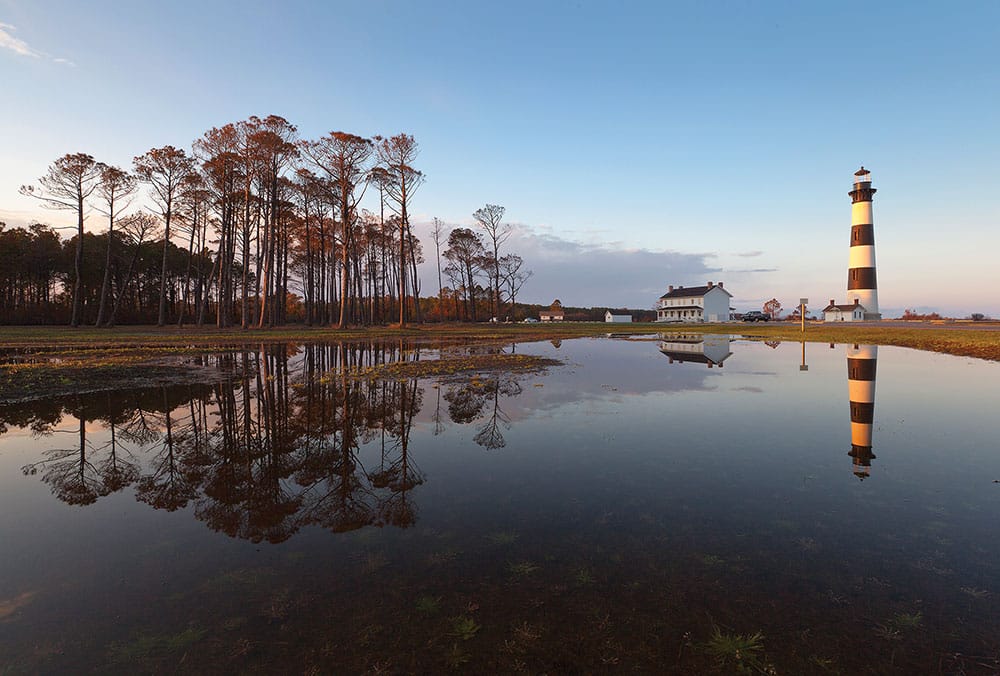
Fly Fishing the Outer Banks
Miles of beautiful coastline, loads of history and an enjoyable summertime climate make the Outer Banks an ideal spot to kick back for much needed R&R with the family. While the majority of family vacation time is probably spent with your spouse and children (as it should be), this stretch of U.S. coastline is one destination that you’re going to want to smuggle a few fly rods into among your luggage. One perk of this area is that, during the summer months, you really don’t need specific gear (for the most part). Largemouth or smallmouth bass fly tackle will cover you for most situations. Rods from 6- to 8-weights are perfect — even a 5-weight will have some game. Keep in mind that there are a couple of differences from the ponds, rivers and streams back home. As a rule, flies should be subsurface streamers and should be fished on intermediate fly lines. If you do not have an intermediate, use a floater. Here is a quick guide to your tackle needs, which are surprisingly simple. Flies that are proven winners, such as Bob Clouser’s Deep Minnow, aka Clouser, in black over orange with lots of copper or gold flash are a must. This color combination is a spotted seatrout killer and can also be deadly on flounder, puppy drum (redfish) and even bluefish. Other effective colors are chartreuse over white, gray over white, pink over chartreuse, and olive over white. Tie these varying Clousers on hook sizes from 4 to 1/0 with small to medium eyes. These will be your go-to’s, but crab patterns and small poppers can come in handy if you can get back into the sounds. If you can only fish the ocean, use your lighter-colored Clousers and even bonefish flies like Crazy Charlies on 9- to 10-foot leaders tapered down to 16- to 20-pound tippet. For intermediate lines, I prefer to shorten my leaders to around six to eight feet. For the most part, the fish you will encounter will not be monsters, but there are lots of sharp objects like oysters, shells and the like. During July and August, the waters in the sound are warm to hot, so wet wading is perfect. But be sure to wear foot protection.
So, where should you sneak out and try for yourself? In my experience, I’ve found that the areas around Oregon Inlet have some of the most consistent wade-fishing opportunities, specifically Blossy Creek, which is behind the Bodie Island Lighthouse. The midsummer water in this area can get very hot, but if you have northeast winds, it’s a good place to check. There is also very good wading around the Oregon Inlet Fishing Center, in particular the spot referred to as the Propeller Slough. There is free parking at the center and there are usually one or two locals wading each morning. When looking for wading spots, focus on deeper holes or fishing around marsh islands where there is some depth and current. When talking about depth, it does not need to be 20 feet; most of the good trout fishing is in four feet of water or less. Look at a local tide chart and prospect at low tide. The Outer Banks does not have a big tide — maybe 18 to 30 inches depending on the wind direction. About 99 percent of your fishing will be in the form of prospecting with blind casts, so longer casts will allow you to cover more water and show the fly to more fish. Vary your retrieve and, when you hit something, repeat.
If you brought a kayak or can rent one, your odds of finding good fishing will get better. There are plenty of backcountry areas that are perfect for kayak anglers. A couple of problem spots exist around the inlets, but most of the shallow waters behind the Banks are easily accessible. The inlets have tough currents and considerable boat traffic. The good news is that the better fishing isn’t in the inlet anyway. Behind Roanoke Island is a great spot to bring the ’yak. Along the ocean in the early mornings before the beach loads up with sun worshippers is a great place and time to find bluefish roaming the surf line. Besides bluefish, the sloughs along the beach will hold croakers, sea mullet (kingfish) and small flounder, and there’s always a possibility for puppy drum.
The local tackle shops are a very good source of information on what you can fish for and where you can do it yourself. There are no fly shops on the Outer Banks, but one or two stores carry a few basic flies. When asking for DIY information as in where anglers are wading for specks and other inshore fish, use this basic rule: If they can catch them on artificial lures, you can catch them on fly.

